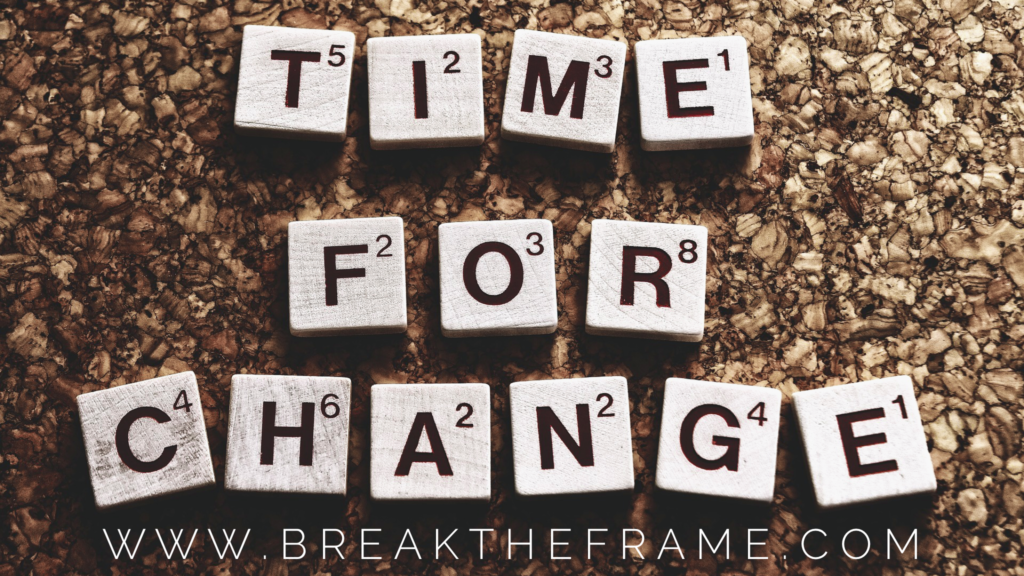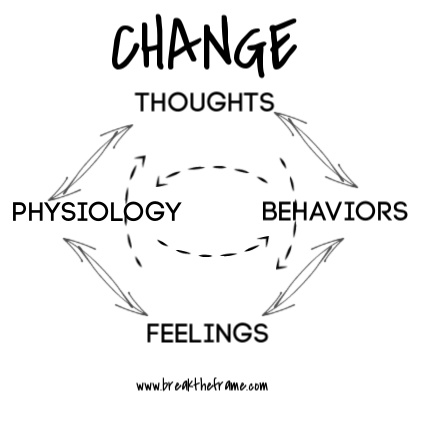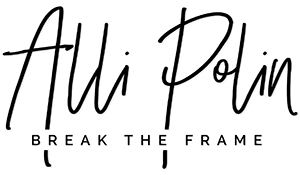
Let me set the stage. It was the end of a workshop on change. Picking up a friend, I wasn’t there to add my two cents, but it was difficult for me to say nothing. Here’s the gist:
If you want to change, just do this new thing.
Nothing about how to avoid falling into old behaviors.
Forget talking about ways to notice the moments of choice; to switch from old behavior to new.
Change was simplified to the equivalent of a light switch on the wall. On, off.
Change, done.
Come on. That’s nuts. Anyone who’s ever proclaimed a New Year’s resolution knows that saying you’ll change, making remarkably better choices, and doing it for the long-haul, are not the same things. (Even after a bang-up workshop with kick-ass role plays.)
Maybe you have your word to guide your actions in the new year and think that you’re all set. This will be the year you’re going to do whatever it takes to build new habits and transform your life. Finally, lasting change.
Easy-peasy, right? Wrong.
There’s a small problem that’s going to get in your way – your cruise control is reliable. It’s almost like you’re living in a world of autonomous vehicles where you have nothing to do but take a backseat and let your car take you from Point A to Point B. No sweat. However, the news reminds us every now and again that autonomous vehicles are less than perfect and still get into accidents. There are times when human intervention is necessary.
If your life is like a self-driving car, are you asleep at the wheel, knowing all you have to do is key in your destination, or are you aware of what’s happening around you?
Sure, it’d be wonderful if all you had to do was set a goal and change your behavior to achieve it. Reality is more complicated. All of your new behaviors take time and energy and you will want to give up. You will because behavior change doesn’t happen in a vacuum.
Let’s start by looking at the components of transformative, lasting change.

There are three things going on simultaneously: Your external action, internal dialogue, and your automatic physical reactions and responses.
DO (External) <—> Feel/Think (Internal) <—> Body (Automatic)
Ever Wonder?:
What happens when you change what you DO but not how you think or feel?
Can you override the messages your mind and body are sending you?
Ready to make a lasting change? Here’s what you need to know:
You can change your behaviors and/or thoughts and/or feelings, but not one of them is the secret to lasting change. It all starts with AWARENESS, and the first whispers may come from physiology.
Let’s walk through an example:
Your Goal/Desired Behavior: I want to communicate assertively, not aggressively.
Situation: You have a big deliverable due to an important client at the end of the week. Your team member comes to the team meeting unprepared. You had absolutely no idea they weren’t ready to deliver what was promised.
Physiology (Body): Your teeth clench, and you hold your breath. Looking down, you notice that your knuckles are turning white because your fists are clenched.
Feelings: Angry, frustrated, disappointed.
Thoughts: Why didn’t they come to me? What will I tell the client? How will I deal with them? I’m so let down.
Behavior:
- Do you think your communication will be calm, cool, and collected?
- Do you think you may be aggressive in tone and words?
When we choose to start with a BEHAVIOR change, it’s tough to do when all of these other triggers are big-time getting in your way.
It’s not enough to change your behavior without an awareness of your thoughts and feelings. It’s not. Especially without awareness of the moment of choice. When you stay on cruise control, you might as well get up out of the driver’s seat and sit in the passenger seat.
Change is more than doing something new. What you do, think, feel, and experience in your body are interconnected. Lasting change is predicated on a shift in each dimension as opposed to a single switch to flick.
Here’s where to start when you want to make change stick:
- List a few examples of when you did what you wanted to do. (Your behavior matched your desired behavior. )
- Break it down: What were your thoughts, feelings, and physiology?
- List a few examples of when you went down a path you no longer want to travel.
- Break it down: What were your thoughts, feelings, and physiology?
- How can you turn off cruise control? i.e., What is the first hint that you need to jump into manual?
- Are there thoughts and feelings that are not serving you? It’s not as easy as simply replacing them, but you can ask yourself, looking at your list:
- What else is true?
- Is it within my control?
- Am I taking responsibility for my actions?
- Do I have a choice?
You can change your life.
Hit the gym.
Write that book.
Communicate more assertively.
On and on…
But it will take more than a decision to change your behavior, followed by a healthy dose of willpower and determination. You need to be aware of your thoughts, emotions, and beliefs to take actions that will create the results that you want. Full stop.
However, it’s not all bad news. I don’t want you to think that changing your behavior without doing the inner work is a waste of time because it’s not. Your behaviors influence your thoughts, feelings, and physiology!
Instead of waiting until your goals are nothing more than wished-I-did, start to dwell in awareness, making the unseen, seen. You can take control and create the life that you want to lead. Instead of a new year, new you? Make this the year of new behaviors, new thoughts, new feelings. Bye-bye cruise control. You’re stepping back into that driver’s seat.
What do you think? How has this been true (or not) for you?

Hi Alli,
Your work in the “change” field comes to clear view in this punchy post on the truth about change. It’s straight on with what most people go through and you tackle the myth that change is like a light switch. As you say, FALSE.
I add a few of my personal experiences to your wonderful post:
——————-
1) Most people change when the fear or risk of changing is less than the fear or risk of staying the same. So can we make change happen before we get to this endpoint mindset? Yes it is possible. Ask ourselves, why wait? What is trapping me in the ‘not yet’ syndrome?
2) Visualize the good that can come from the change. I mean really picture it. Now picture the steps that can get you there. If you still decide to wait, accept it. At least you will know that you are actively choosing to stay the same. This awareness will propel you in the future.
3) If fear really seems to grip you, ask yourself “Is it a feeling or a fact?” THIS question is the one question that has moved me forward so many times in life.
Here’s to an exciting New Year for all and I wish us all the desire, excitement, and courage to change.
Kate
Great additions, Kate! We need a compelling vision to call us forth or we’re likely to stay where we are. Whether a change is monumental or a goal we’d like to achieve that will take new behaviors and habits, we have the ability to change our internal conversation with our thoughts, and tell our saboteurs, like our fears, that we’re running the show.
Here’s a piece I wrote about change and action despite fear based on a moment I’ll never forget… https://breaktheframe.com/feel-fear/
Alli
Change may be my middle name. It may have started with my recognition that change is inevitable, it’s a defining characteristic of life. So, I set about early on to be and do change and the beat goes on. The big question is what kind of change do you want to design and facilitate both for yourself and with others? I have studied the dynamics of change, been a professional change agent, looking inward and outward, and have probably written about change more than any other topic. And here we are, on the cusp of winter solstice, in tune with the changing seasons, a metaphor for our own lives. What kind of Light do you need for the change you seek? There it is. Know your why as well as what, when and how of change and then ask this question. What has been the biggest change in your life thus far and what did you learn from that? Thanks, Alli, as always, for being such an inspiration and Happy Holidays ahead.
I know you’re passionate about change too! There are changes to our circumstances and changes to our health, lives, work and finances and more… and many are out of our control. All require work to get thought and find a new normal. So too do behavioral changes we choose. In those cases, it’s needs some mindfulness to make the shift. We can’t do what we’ve always done but instead be mindfully aware when we’re on autopilot to turn off that cruise control.
Also, as you pointed out, it is helpful to look to those times that we did make changes successfully and learn from those moments and use it as proof of “yes I can!… again.”
Thanks, Gary!
alli
Love it. Great article. As I was reading through it your point about feelings jumped out at me. Change the habit – change the result but just as important is to think it, act it and become it. Act in a way that is going to get you what you want. If I want to learn how to be more open and receptive then the body language has to be congruent. Others must be able to see me being more open and receptive.
Definitely, it’s not only changing our habits but all of those other pieces that make it stick. Not to mention, show ourselves and the world around us that we have indeed made the leap. Big yes to “think it, act it, become it!” Thanks, Brian!
Alli
Excellent post on change! You challenge us to think about change as inner driven with a great deal of thought. I have been taking a meditation class this fall and although I want to add meditation to my new behaviors I am not there yet. Maybe, I need to focus on the true benefits of being still with myself and honoring a calm state of mind. A goal is definitely not good enough. I am going to work on my list today.
Thanks Alli for your continued teachings! Will share!
Love that you’ve taken a class on meditation! I’ve tried in the past and in the middle of it I start telling myself things like: I’m no good at meditation. Maybe meditation just isn’t for me. With those thoughts running through my mind, it’s the perfect excuse to explain why my commitment to meditation is such a failure. I’m confident that your experience will be better. It’s getting the thoughts and desires and actions in alignment that makes a big difference.
Alli